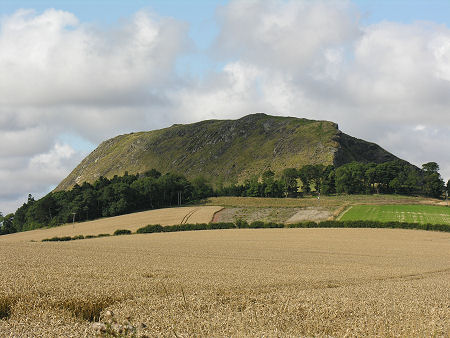 Traprain Law |
Princess Theneva, later Saint Thenava (or, Denw, Tenew, Thanea or Enoch) lived from about 510 to about 570. She was the daughter of King Loth of the Gododdin, and mother of St Mungo or St Kentigern. The wider picture in Scotland at the time is set out in our Historical Timeline.
Princess Theneva's father, King Loth of the Gododdin, after whom Lothian was named, ruled from the Goddodin capital on Traprain Law, and she was probably born and brought up there.
In 528, after an illicit encounter with her cousin, the young King Owain of North Rheged, now part of Galloway, Princess Thenva fell pregnant. Her unamused father had her tied to a chariot and launched off Traprain Law. It miraculously landed softly, hurting neither Thenva or her unborn child. The Gododdin, now believing Thenva also to be a witch, then cast her adrift in a coracle without oars on the River Forth. She drifted up-river and came ashore at Culross in Fife.
Here she was taken in by St Serf, who had founded a religious community nearby. She subsequently gave birth to a son, who became Saint Mungo, also known as Saint Kentigern. St Serf then oversaw Mungo's upbringing. At the age of 25, Mungo began his missionary work on the banks of the River Clyde. Here he was welcomed by people previously converted to Christianity by St Ninian, and here Mungo also built his church, close to the confluence of the River Clyde and the Molendinar Burn. Since the 1200s the site of this early church has formed part of Glasgow Cathedral.
Theneva may have accompanied her son to Glasgow. She was subsequently sainted and is remembered in Glasgow in the name of St Enoch's Square, which stands on the site of a medieval religious church dedicated to St Enoch, one of the alternative names for Saint Thenava. She is viewed as one of the patron saints of Glasgow.
